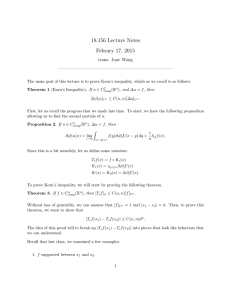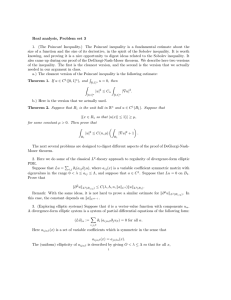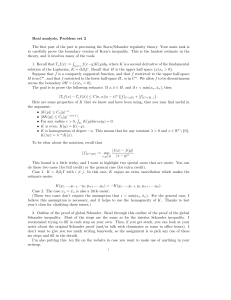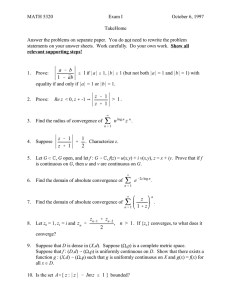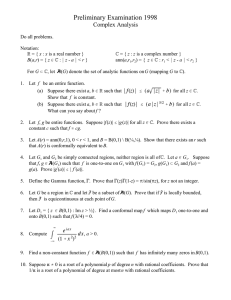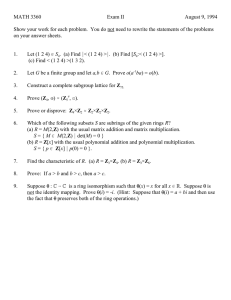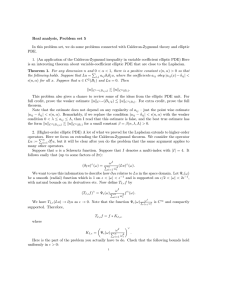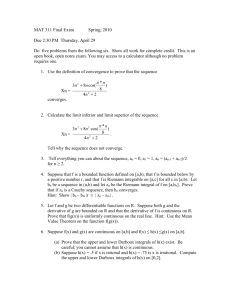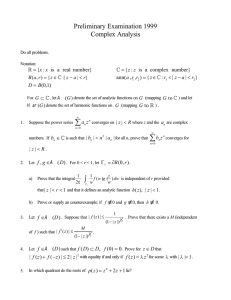Real analysis, Problem set 1 (My email address is
advertisement
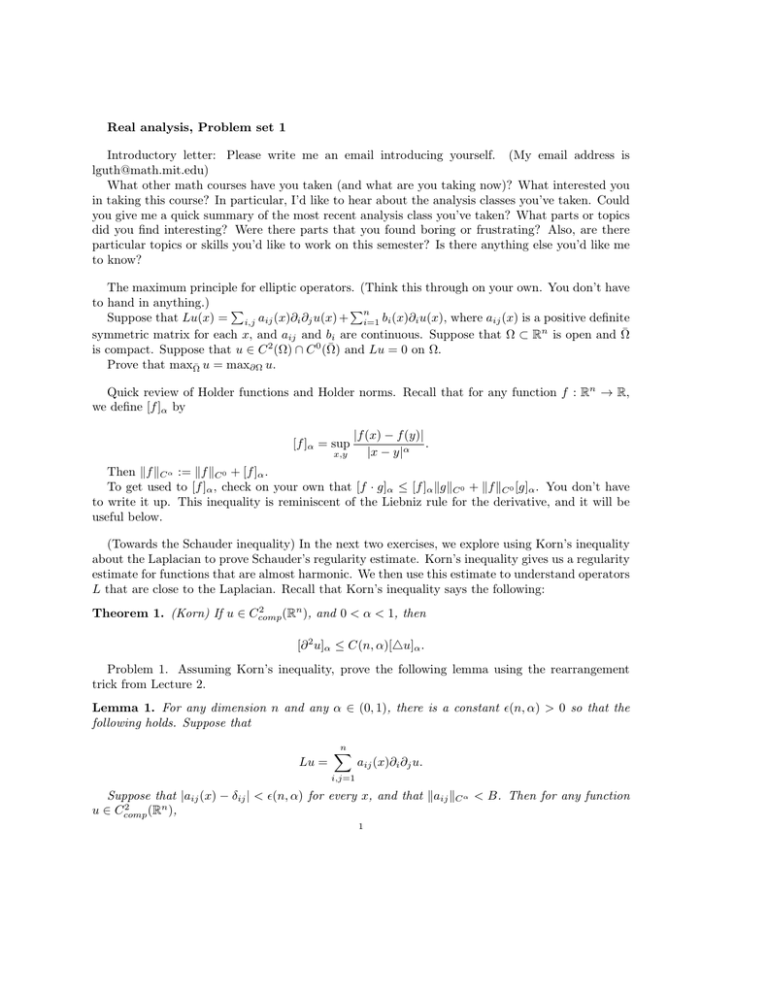
Real analysis, Problem set 1 Introductory letter: Please write me an email introducing yourself. (My email address is lguth@math.mit.edu) What other math courses have you taken (and what are you taking now)? What interested you in taking this course? In particular, I’d like to hear about the analysis classes you’ve taken. Could you give me a quick summary of the most recent analysis class you’ve taken? What parts or topics did you find interesting? Were there parts that you found boring or frustrating? Also, are there particular topics or skills you’d like to work on this semester? Is there anything else you’d like me to know? The maximum principle for elliptic operators. (Think this through on your own. You don’t have to hand in anything.) P Pn Suppose that Lu(x) = i,j aij (x)∂i ∂j u(x) + i=1 bi (x)∂i u(x), where aij (x) is a positive definite symmetric matrix for each x, and aij and bi are continuous. Suppose that Ω ⊂ Rn is open and Ω̄ is compact. Suppose that u ∈ C 2 (Ω) ∩ C 0 (Ω̄) and Lu = 0 on Ω. Prove that maxΩ̄ u = max∂Ω u. Quick review of Holder functions and Holder norms. Recall that for any function f : Rn → R, we define [f ]α by [f ]α = sup x,y |f (x) − f (y)| . |x − y|α Then kf kC α := kf kC 0 + [f ]α . To get used to [f ]α , check on your own that [f · g]α ≤ [f ]α kgkC 0 + kf kC 0 [g]α . You don’t have to write it up. This inequality is reminiscent of the Liebniz rule for the derivative, and it will be useful below. (Towards the Schauder inequality) In the next two exercises, we explore using Korn’s inequality about the Laplacian to prove Schauder’s regularity estimate. Korn’s inequality gives us a regularity estimate for functions that are almost harmonic. We then use this estimate to understand operators L that are close to the Laplacian. Recall that Korn’s inequality says the following: 2 (Rn ), and 0 < α < 1, then Theorem 1. (Korn) If u ∈ Ccomp [∂ 2 u]α ≤ C(n, α)[4u]α . Problem 1. Assuming Korn’s inequality, prove the following lemma using the rearrangement trick from Lecture 2. Lemma 1. For any dimension n and any α ∈ (0, 1), there is a constant (n, α) > 0 so that the following holds. Suppose that Lu = n X aij (x)∂i ∂j u. i,j=1 Suppose that |aij (x) − δij | < (n, α) for every x, and that kaij kC α < B. Then for any function 2 u ∈ Ccomp (Rn ), 1 2 [∂ 2 u]α ≤ C(n, α, B) [Lu]α + k∂ 2 ukC 0 . Problem 2. Using Lemma 1 and localizing with a bump function, prove the following lemma. Lemma 2. (Baby Schauder estimate) Let (n, α) > 0 and L be as in Lemma 1. Then, if u is a C 2 function on a ball Br , and Lu = 0, kukC 2,α (Br/2 ) ≤ C(n, α, B, r)kukC 2 (Br ) . Final comments. Lemma 2 is a weaker result in the spirit of the Schauder inequality. To prove the real Schauder inequality for L, we would like to replace the norm kukC 2 (Br ) on the right-hand side with kukC 0 (Br ) . We will talk about this issue in class. Problem 3. This is a simply stated problem in Euclidean geometry which has important connections to analysis, including elliptic PDE. Suppose that U ⊂ R3 is an open set and suppose that the area of the orthogonal projection of U onto every plane is at most 1. Does it follow that the volume of U is at most 106 ? Informally, if the set U appears small when viewed from every angle, does it follow that U is actually small? Here is a closely related combinatorial problem, which might be easier to get started on. Suppose that A ⊂ Z3 . Consider the three coordinate projections Z3 → Z2 : for instance π13 (x1 , x2 , x3 ) = (x1 , x3 ). Suppose that |πij (A)| ≤ N for all three projections. (We write |S| for the cardinality of the set S.) What is the best bound that you can prove for |A|? Challenge problem. (Exploring almost harmonic functions) Let B1 ⊂ R2 denote the unit disk. Suppose that u ∈ C 2 (B1 ) with |4u| ≤ 10−6 and |u| ≤ 1. Does it follow that |∇u(0)| ≤ 106 ? I encourage you to come back to this problem from time to time over the next week as we learn different ways to study elliptic regularity. All the techniques we will be learning in the next weeks are potentially relevant to this question. If you can’t solve the whole problem, can you prove other things about almost harmonic functions? Or can you prove this estimate in some special case, such ∞ with the support of u in B1 ? as u ∈ Ccomp
